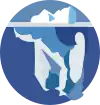Portal:Cuba
Welcome to the Cuba Portal Location of Cuba in the Caribbean
Cuba (/ˈkjuːbə/ ( Cuba is one of a few extant Marxist–Leninist one-party socialist states, in which the role of the vanguard Communist Party is enshrined in the Constitution. Cuba has an authoritarian regime where political opposition is not permitted. Censorship of information (including limits to Internet access) is extensive, and independent journalism is repressed in Cuba; Reporters Without Borders has characterized Cuba as one of the worst countries in the world for press freedom. Cuba is a founding member of the United Nations, G77, Non-Aligned Movement, Organisation of African, Caribbean and Pacific States, ALBA, and Organization of American States. It has currently one of the world's few planned economies, and its economy is dominated by the tourism industry and the exports of skilled labor, sugar, tobacco, and coffee. Cuba has historically—both before and during communist rule—performed better than other countries in the region on several socioeconomic indicators, such as literacy, infant mortality and life expectancy. (Full article...) Selected article -
Guantanamo Bay Naval Base (Spanish: Base Naval de la Bahía de Guantánamo), officially known as Naval Station Guantanamo Bay or NSGB, (also called GTMO, pronounced Gitmo as jargon by members of the U.S. military) is a United States military base located on 45 square miles (117 km2) of land and water on the shore of Guantánamo Bay at the southeastern end of Cuba. It has been permanently leased to the United States since 1903 as a coaling station and naval base, making it the oldest overseas U.S. naval base in the world. The lease was $2,000 in gold per year until 1934, when the payment was set to match the value in gold in dollars; in 1974, the yearly lease was set to $4,085. Since taking power in 1959, the Cuban communist government has consistently protested against the U.S. presence on Cuban soil, arguing that the base "was imposed on Cuba by force" and is "illegal under international law." Since 2002, the naval base has contained a military prison, for alleged unlawful combatants captured in Afghanistan, Iraq, and other places during the War on Terror. Cases of alleged torture of prisoners by the U.S. military, and their denial of protection under the Geneva Conventions, have been criticized. (Full article...)General imagesThe following are images from various Cuba-related articles on Wikipedia.
Did you know (auto-generated)
| |||||||||||||||
 Cyclura nubila |
The Cuban rock iguana (Cyclura nubila), also known as the Cuban ground iguana or Cuban iguana, is a species of lizard of the iguana family. It is the second largest of the West Indian rock iguanas (genus Cyclura), one of the most endangered groups of lizards. A herbivorous species with a thick tail and spiked jowls, it is one of the largest lizards in the Caribbean.
The Cuban iguana is distributed throughout the mainland of Cuba and its surrounding islets with a feral population thriving on Isla Magueyes, Puerto Rico. A subspecies is found on the Cayman Islands of Little Cayman and Cayman Brac. Females guard their nest sites and one population nests in sites excavated by Cuban crocodiles. As a defence measure, the Cuban iguana often makes its home within or near prickly-pear cacti. (Full article...)Selected biography -
 Oviedo playing the tres, c. 1930. |
Isaac Oviedo (July 6, 1902 – June 16, 1992) was a Cuban tres player, singer and songwriter. He was the founder and leader of the Septeto Matancero for over 50 years, and the author of many famous sones such as "Engancha carretero". Throughout his long career Oviedo only recorded a handful of sessions, mostly for American record labels. He has been called "one of the greatest Cuban tres players" by other musicians such as Efraín Ríos and Pancho Amat. According to the latter, Oviedo was the pioneering and most influential tresero of the septeto format (the major type of son ensemble of the 1920s and '30s). His technical innovations include the alzapúa thumb stroke and the use of the pinky finger.
His son Ernesto played in his band since the 1940s and became a successful bolero singer, while his other son Gilberto, known as Papi Oviedo, has also had a long career as a tresero, playing with Conjunto Chappottín, Estrellas de Chocolate and Orquesta Revé. (Full article...)Selected picture

More did you know -

- ...that a view from the Plaza Mayor (pictured) in Trinidad, Cuba, is featured on the 25 centavo convertible peso coin?
- ...that the Cuban night lizard is less than 4 cm long and lives exclusively in the west corner of the southern-most coast of Cuba?
- ...that Tomás Gutiérrez Alea was a Cuban filmmaker who wrote and directed more than 20 features, documentaries, and short films, and is known for his sharp insight into post-Revolutionary Cuba?
- ...that Eastern Cuban cuisine forms the basis of criollo cooking, which shares a great deal of recipes with other Caribbean cuisines, but has the distinctive difference of making almost no use of peppers?
- ...that José Raúl Capablanca was a Cuban world-class chess player in the early to mid-twentieth century. He held the title of world chess champion from 1921 to 1927.
| More did you know... | New articles... |
Topics
Categories
Quote of the day
| “ | Music is a treasure hunt. You dig and dig and sometimes you find something. In Cuba, the music flows like a river | ” |
American guitarist Ry Cooder on his experiences working Cuban musicians on the Buena Vista Social Club.
Things you can do
Wikipedia's maxim is that anyone can edit. If you are interested in Cuba and have useful information that would form a new article or would enhance an existing article, please feel free to take part. Here are some tasks you can do to help with WikiProject Cuba:
Task list
- New article announcements:
- Requests: Ambrosio Cave, Calero Cave, Cementerio de Santa Ifigenia, Centella Cave, Consejo popular (Cuba), Cuba and the United Nations, Cuban Liberation Army, Cuevas de Punta del Este, Cura Cave, Patana Cave, Pluma Cave
- Stubs: Alberto Yarini, Celia Sánchez, Dollar store (Cuba), Sport in Cuba
- Verify: History of Cuba, Fulgencio Batista
- Update: Nochebuena
- NPOV: Armando Valladares, Delfín Fernández, History of Cuba
- Copyedit: Armando Peraza, Bay of Pigs Invasion, Fabio Grobart, Julio Antonio Mella
- Cleanup: Abelardo Colomé Ibarra, Antonio Maceo Grajales, Bay of Pigs Invasion, History of Cuba, List of Cubans, Máximo Gómez, War against the Bandits
- Style: Fidel Castro
- Expand: Cuba–Soviet Union relations, Baseball in Cuba, Religion in Cuba, Havana's International Book Fair, Cuba–Venezuela relations, Antonio Sánchez de Bustamante y Sirven
Related portals
WikiProjects
- Main WikiProject:
- WikiProject Cuba
- Other related WikiProjects:
- Geographical:
- Latin America countries: Argentina • Brazil • Colombia • Ecuador • Peru • Uruguay • Venezuela
- Caribbean: Dominican Republic • Puerto Rico
- Central America: El Salvador • Guatemala • Mexico
- North America: Canada • United States
- History and Society:
- African diaspora • Latinos • Mesoamerica
- Geographical:
Recognized content
Associated Wikimedia
The following Wikimedia Foundation sister projects provide more on this subject:
-
 Commons
Commons
Free media repository -
 Wikibooks
Wikibooks
Free textbooks and manuals -
 Wikidata
Wikidata
Free knowledge base -
 Wikinews
Wikinews
Free-content news -
 Wikiquote
Wikiquote
Collection of quotations -
 Wikisource
Wikisource
Free-content library -
 Wikispecies
Wikispecies
Directory of species -
 Wikiversity
Wikiversity
Free learning tools -
 Wikivoyage
Wikivoyage
Free travel guide -
 Wiktionary
Wiktionary
Dictionary and thesaurus
More portals
-
 List of all portalsList of all portals
List of all portalsList of all portals -
 The arts portal
The arts portal -
 Biography portal
Biography portal -
 Current events portal
Current events portal -
 Geography portal
Geography portal -
 History portal
History portal -
 Mathematics portal
Mathematics portal -
 Science portal
Science portal -
 Society portal
Society portal -
 Technology portal
Technology portal -
 Random portalRandom portal
Random portalRandom portal -
 WikiProject PortalsWikiProject Portals
WikiProject PortalsWikiProject Portals





























